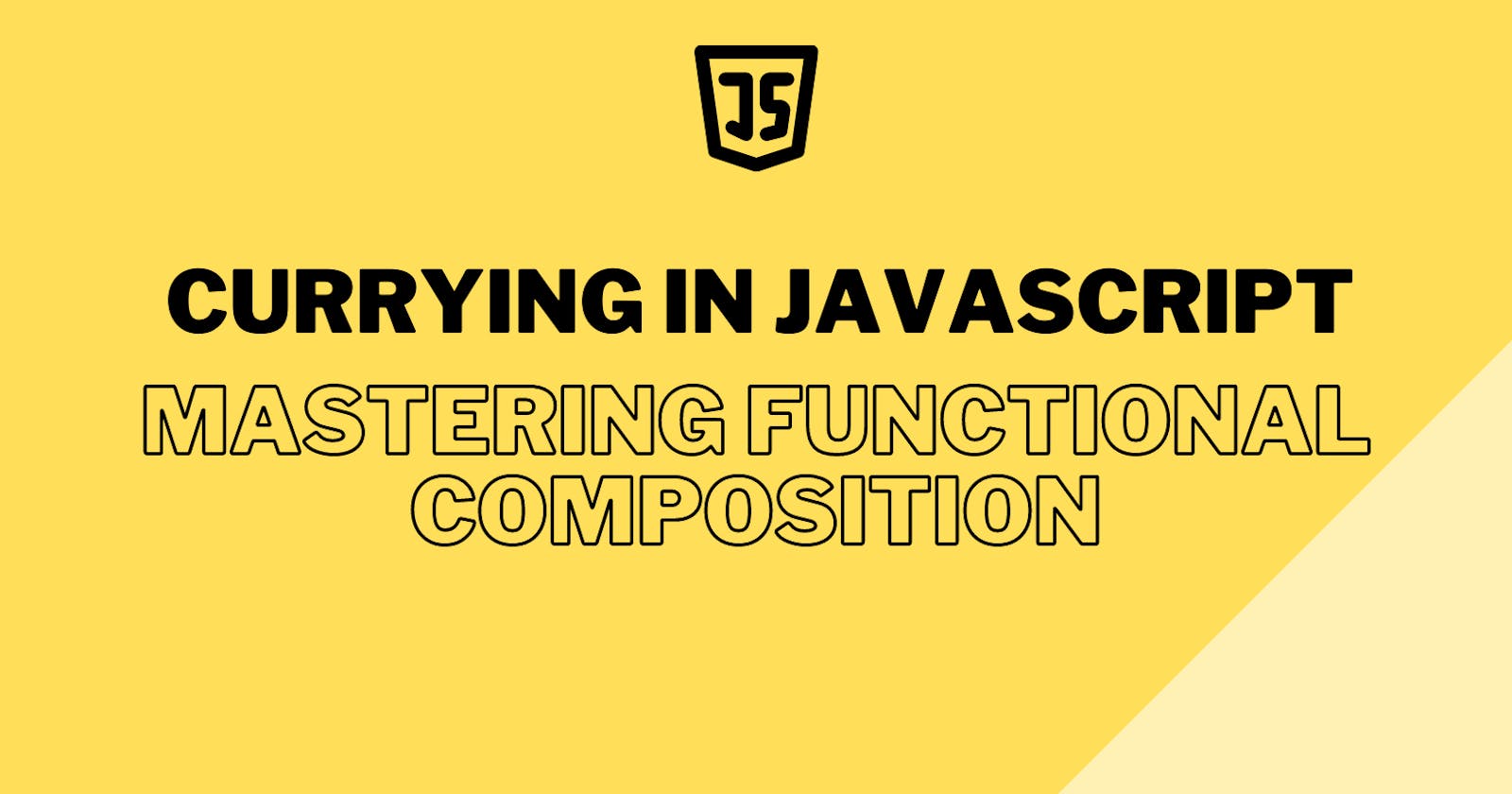Introduction
In the realm of functional programming, currying is a powerful technique that allows you to transform a function with multiple arguments into a sequence of functions, each accepting a single argument. This elegant concept not only promotes code reuse and modularity but also enhances the overall flexibility and expressiveness of your JavaScript programs. In this blog post, we will dive deep into the world of currying, exploring its definition, benefits, and real-world examples.
What is Currying?
Currying is the process of transforming a function with multiple arguments into a sequence of functions, each taking a single argument. The name "currying" was inspired by the mathematician Haskell Curry, who made significant contributions to the field of mathematical logic. By currying a function, you can create specialized versions of it, allowing you to partially apply arguments and generate new functions on demand.
Benefits of Currying:
Partial Application: Currying enables you to create new functions by applying a subset of the original function's arguments. This allows for code reuse and promotes modularity in your programs.
Flexibility and Composition: Curried functions can be easily composed together, forming more complex functions by piping the output of one function into the input of another. This composability leads to more concise and expressive code.
Reusability: Currying encourages the creation of reusable functions, as each curried function can be specialized for specific use cases by partially applying arguments
Example 1: Basic Currying
Let's begin with a simple example to understand the concept of currying. Consider a function add that takes two numbers and returns their sum:
function add(x, y) {
return x + y;
}
Now, let's curry this function using JavaScript:
function curryAdd(x) {
return function(y) {
return x + y;
};
}
By currying the add function, we transformed it into a curried function curryAdd. We can now use it in different ways:
const add2 = curryAdd(2); // curryAdd with x = 2
console.log(add2(3)); // Output: 5
const add5 = curryAdd(5); // curryAdd with x = 5
console.log(add5(3)); // Output: 8
Example 2: Function Composition
One of the powerful benefits of currying is the ability to compose functions. Let's consider two curried functions, multiply and subtract, which multiply and subtract two numbers, respectively:
function multiply(x) {
return function(y) {
return x * y;
};
}
function subtract(x) {
return function(y) {
return x - y;
};
}
Now, we can compose these functions to create more complex computations:
const multiplyBy3 = multiply(3);
const subtract2 = subtract(2);
const result = multiplyBy3(subtract2(10));
console.log(result); // Output: 24
In this example, we composed the multiplyBy3 and subtract2 functions to compute (10 - 2) * 3, resulting in 24.
Example 3: Practical Use Case
Currying finds its practical application in scenarios where you want to reuse functions with certain arguments fixed. Let's take an example where we have a list of prices and need to calculate the total with a specific tax rate:
function calculateTotal(taxRate) {
return function(prices) {
const total = prices.reduce((acc, price) => acc + price, 0);
return total + (total * taxRate);
};
}
const calculateTotalWithTax = calculateTotal(0.1); // tax rate = 10%
const prices = [10, 20, 30];
const totalWithTax = calculateTotalWithTax(prices);
console.log(totalWithTax); // Output: 66
In this example, we curried the calculateTotal function to create a specialized function calculateTotalWithTax with a fixed tax rate of 10%. We then applied this function to the prices array to calculate the total with tax.
Conclusion:
Currying is a powerful technique in JavaScript that allows you to transform functions with multiple arguments into a sequence of functions, each accepting a single argument. By embracing currying, you unlock the potential for code reuse, modularity, and function composition. It promotes cleaner and more expressive code, enabling you to build flexible and scalable applications. So, the next time you encounter a situation that calls for reusable and composable functions, consider harnessing the power of currying in JavaScript.
